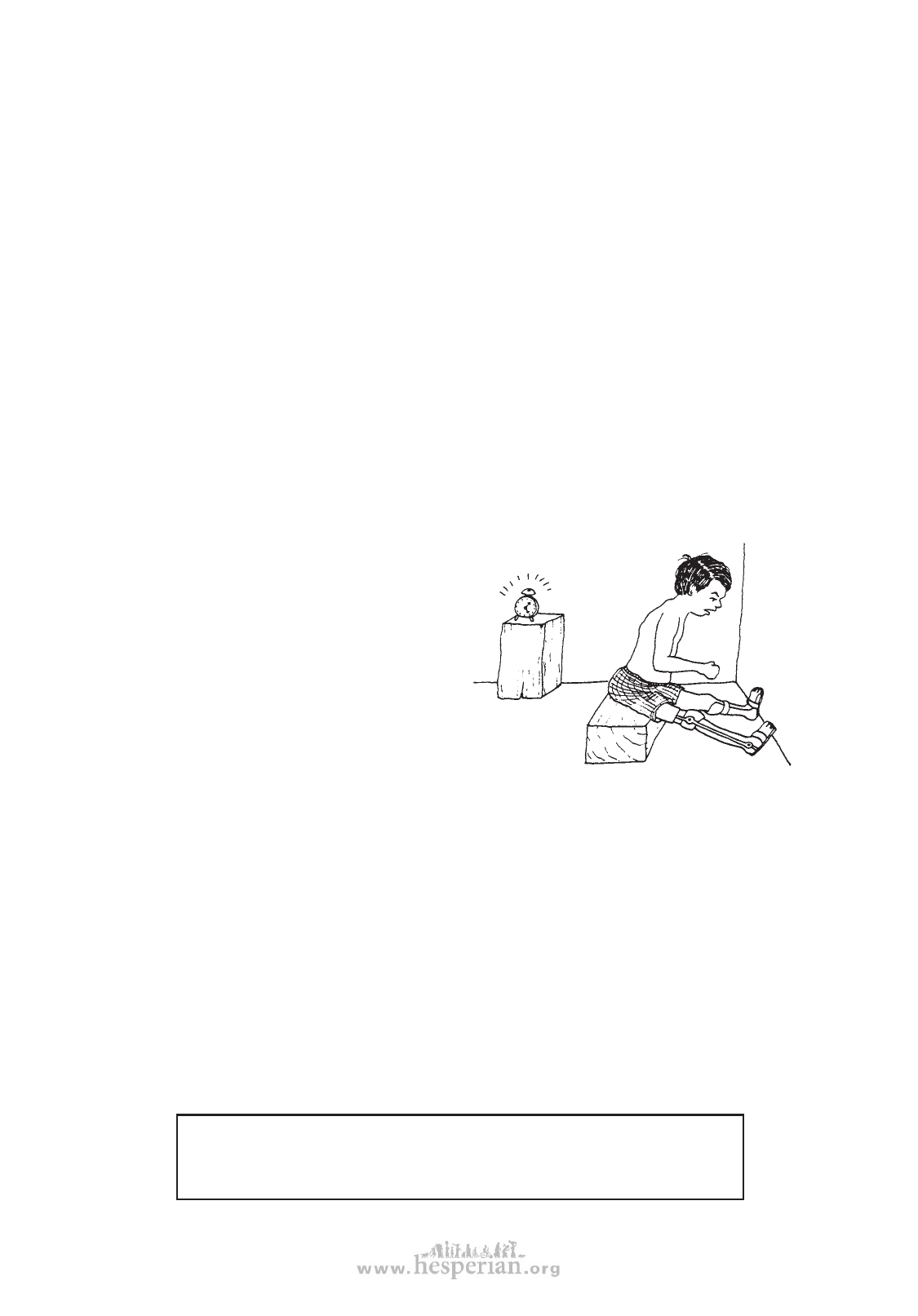
LEARNING AND BEHAVIOR
‘Time Out’ or ‘non-reward’ instead of punishment
The story of the way family and friends used the ‘behavior approach’ to help Jorge sounds
fairly straightforward and simple. But in real life it is seldom that easy. ‘Bad’ behavior may
sometimes be so bad that it cannot be ignored.
357
In general, the best way to make ‘bad’ behavior seem boring to the child and not worth
the trouble is to give no rewarding response. At the same time, make sure to reward ‘good’
behavior. This means everything satisfying stops as a result of ‘bad’ behavior (instead of the
usual situation where everything satisfying starts).
For example, when Raúl throws his food, instead of entertaining him by scolding and
feeding him, his mother should remove both the food and herself for 3 or 4 minutes—
making the situation as boring as possible.
Removing food may seem like punishment. But it is best to aim at making the
situation less interesting rather than making it unpleasant. To make things less
interesting, sometimes we may remove the child from the situation for a brief time. This
is often called ‘time out’.
For example, when Jorge’s grandmother
first began using the behavioral approach,
to try to make her angry he would shout
and hit the chickens with his crutches. But
instead of her usual scolding, grandma
now simply told him that if he did not quiet
down she would ask him to take ‘time out’
in the corner. Then, if he continued to make
trouble, she would lead him to the corner
and tell him that he would have to stay
there for 5 minutes from the time he was
quiet. She set an old alarm clock to ring in
5 minutes. At first Jorge would continue
to shout from the corner, but each time he
did, grandma would set the alarm to ring in another 5 minutes from the time he was quiet.
Meanwhile she gave him no attention and continued her work.
In this way Jorge learned while he was in the corner that the only way to make life
interesting again was to stop making a disturbance. Because he was clever, he learned fast.
(Slower children often take longer.)
We should try to use ‘time out’ as a ‘non-reward’ and not a punishment. However, because
time out is something an adult makes a child do, it can seem like punishment. Try to use it
only when less forceful methods of avoiding rewards do not work. It is best to start with a
‘time out’ period of no more than 5 minutes (less for a very young child). If the child does not
behave better in 5 minutes, consider with the child adding another 5 minutes. Never leave
the child in ‘time out’ for more than half an hour, even if he has still not become quiet.
CAUTION: For a child who is younger than 5 years old or has severe
mental slowness, do not extend time out to more than 15 minutes,
checking frequently with the child to see if he is ready to behave
acceptably.
disabled village children